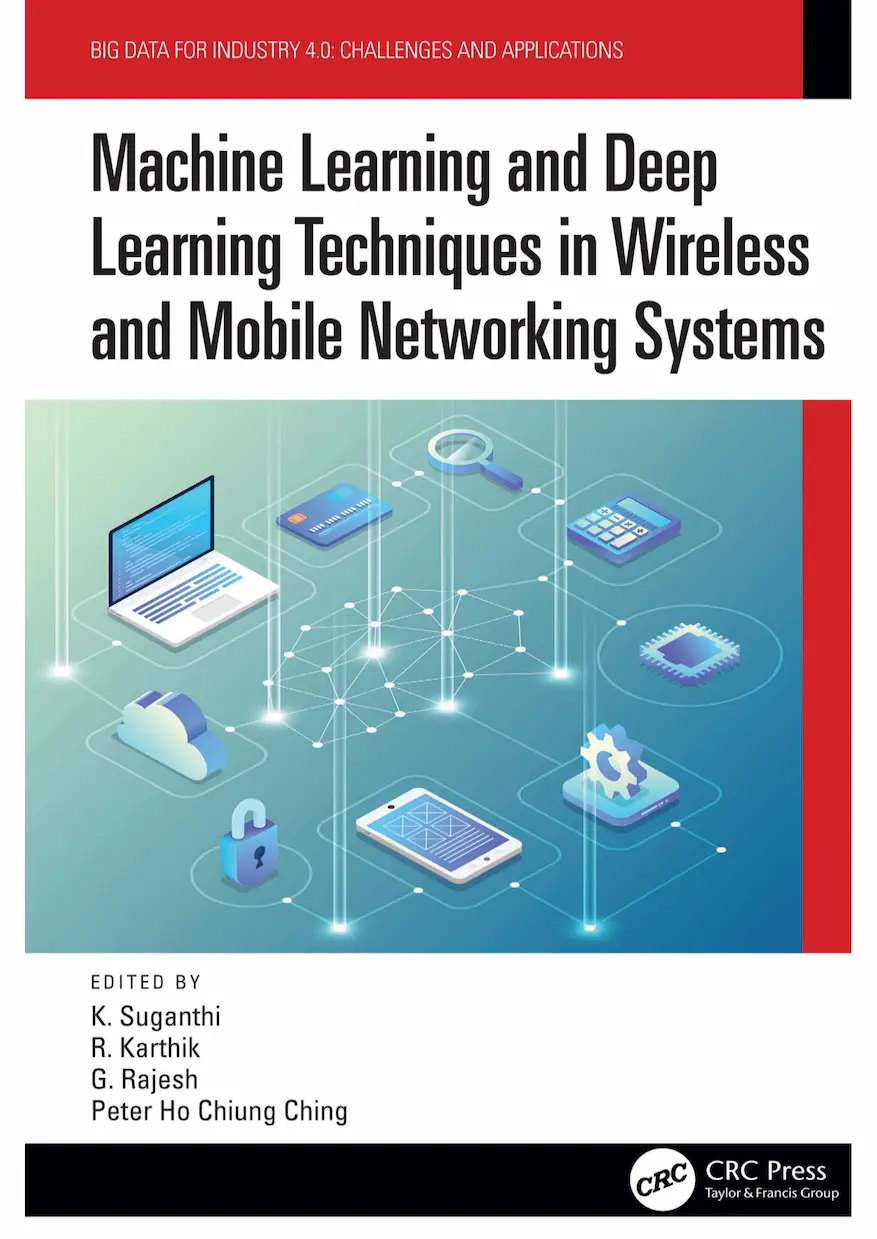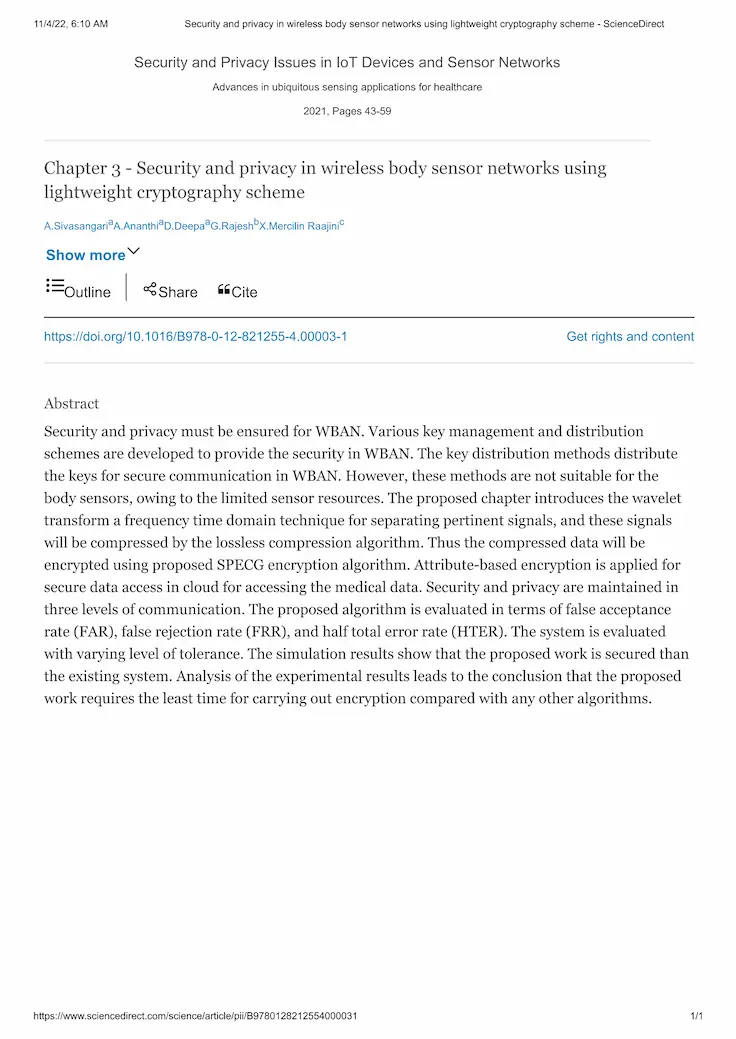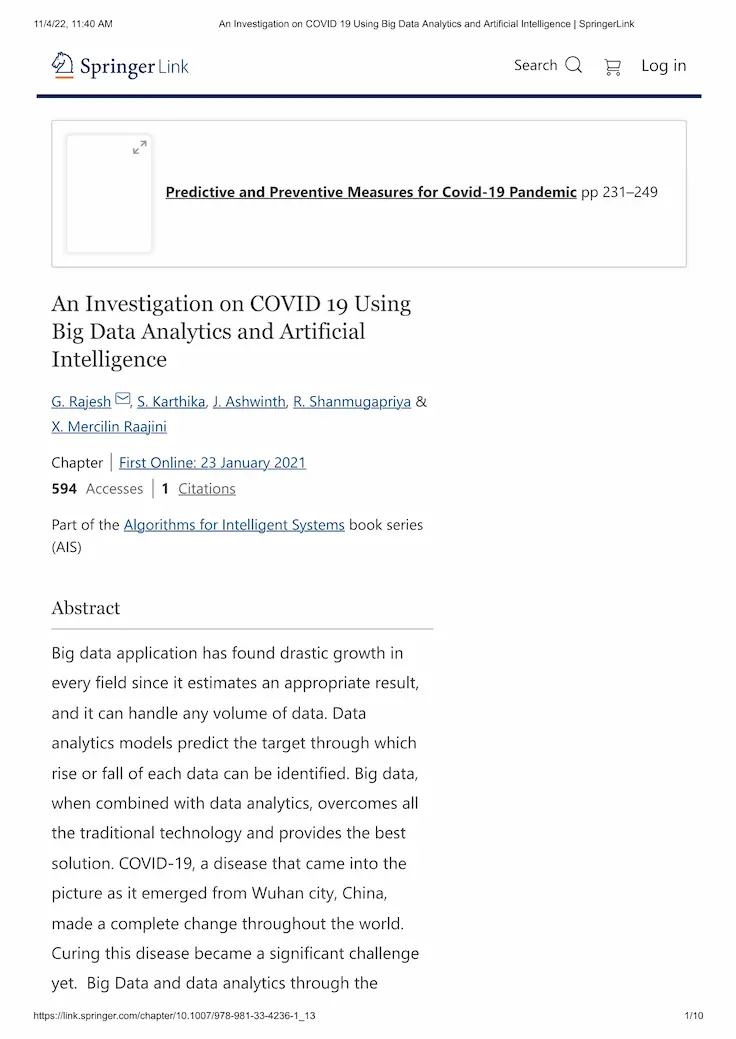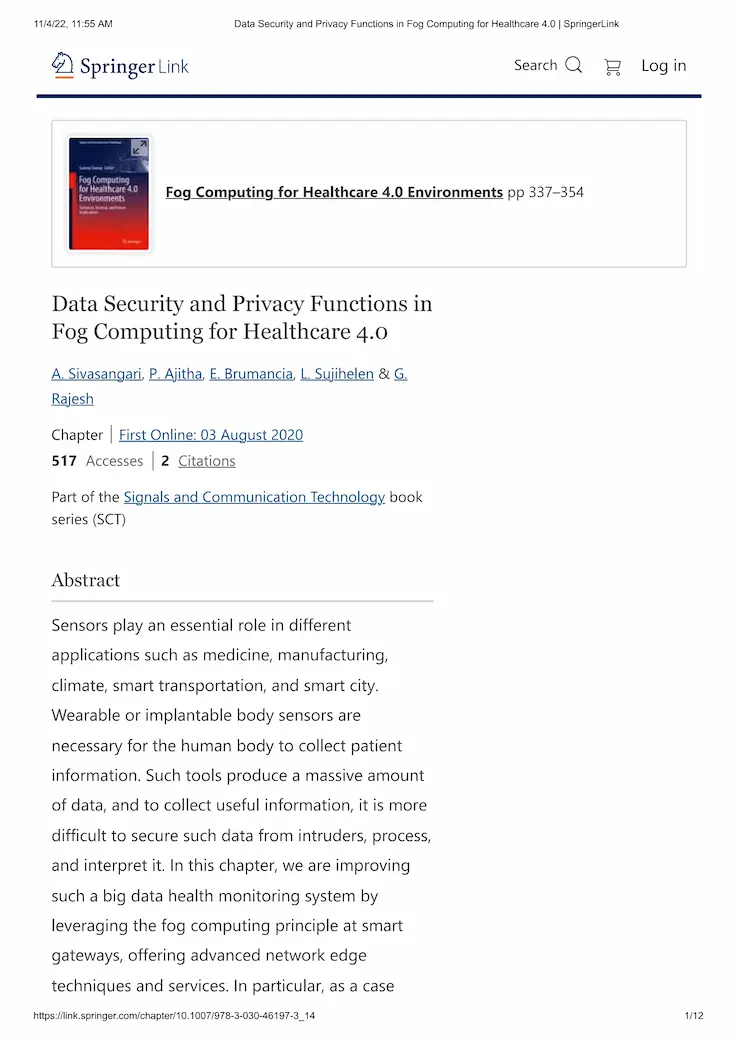 - Dr G Rajesh
- Dr G Rajesh
The design and development of automated approaches to improve the performance of wireless networks are considered among the challenging research issues in the field of wireless and mobile networking. The application of artificial intelligence (AI), machine learning (ML), and deep learning (DL) is relatively limited in the field of wireless networking systems and needs new models and methods to be devel- oped to improve performance. Wireless network technologies such as the Internet of Things (IoT), Industry 4.0, Industrial Internet of Things (IIoT), VANET, and FANET-based applications demand data-driven approaches which involve complex mathematical models. These models can be automated and optimized using ML and DL techniques. AI-, ML-, and DL-based schemes are more adaptable to the wireless environment. These models provide an optimized way to reduce the complexity and overhead of the traditional tractable system models.
 - Dr G Rajesh
- Dr G Rajesh
Industry 4.0 or fourth industrial revolution refers to interconnectivity, automation and real time data exchange between machines and processes. There is a tremendous growth in big data from internet of things (IoT) and information services which drives the industry to develop new models and distributed tools to handle big data. Cutting-edge digital technologies are being harnessed to optimize and automate production including upstream supply-chain processes, warehouse man- agement systems, automated guided vehicles, drones etc. The ultimate goal of industry 4.0 is to drive manufacturing or services in a progressive way to be faster, effective and effcient that can only be achieved by embedding modern day technology in machines, components, and parts that will transmit real-time data to networked IT systems.
 - Dr G Rajesh
- Dr G Rajesh
Security and privacy must be ensured for WBAN.Various key management and distribution schemes are developed to provide the security in WBAN.The key distribution methods distribute the keys for secure communication in WBAN.However,These methods are not suitable for the body sensors, Owing to the limited sensor resources.The proposed chapter introduces the wavelet transform a frequency time domain technique for separating pertinent signals, and these signals will be compressed by the lossless compression algorithm.Thus the compressed data will be encrypted using proposed SPECG encryption is applied for secure data access in cloud for accessing the medical data.Security and privacy are maintained in three levels of communication.The proposed algorithm is evaluated in terms of false acceptance rate(FAR), false rejection rate(FRR), and half total error rate(HTER).>The system is evaluated with varying level of tolerance.The simulation results show that the proposed work is secured than the existing system.Analysis of the experimental results leads to the conclusion that the proposed work requires the least time for carrying out encryption compared with any other algorithms.
 - Dr G Rajesh
- Dr G Rajesh
Internet of things(IotSec) is a challenging research area in Iot - related network technologies due to various constraints.It has been predicted taht 32 million Iot devices will be deployed for various applications in the world by 2020.Iot devices are being penetrated in all kind of physical of physical entities(such as smart home,smart industries,smart cities,hospital,power grid traffic control wearable devices.Nowadays,Iot devices are more personal to human lives,which sense,processes,and communicate the sensitive, critcal; private and more intimate personal data from one end to another
 - Dr G Rajesh
- Dr G Rajesh
Big data application has found drastic growth in every field since it edtimates an appropriate result, and it can handle any volume of data. Data analytics models predict the target through which rise or fall of each data analytics, overcomes all the traditional technology and provides the best solution. COVID-19, a disease that came into the picture as it emerged from Wuhan city, China, made a complete change throughout the world. Curing this disease became a significant challenge yet. Big Data and data analytics through the COVID-19 data have predicted and found the recovery and mortality rate in many hospitals of many countries.
 - Dr G Rajesh
- Dr G Rajesh
Sensors play an essential role in different applications such as medicine, manufacturing, climate, smart transportation, and smart city. Wearable or implantable body sensors are necessary for the human body to collect patient information. Such tools produce a massive amount of data, and to collect useful information, it is more difficult to secure such data from intruders, process, and interpret it. In third chapter, we are improving such a big data health monitoring system by leveraging the dg computing principle at smart gateways, offering advanced network edge techniques and services.